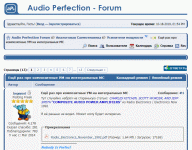Batteries are usually a good solution, but hard to keep charged. AND the best audio products require too much current and voltage to be easily battery powered. However, making a good AC powered supply is a real challenge. Not because of regulation, or even noise necessarily, but subtle problems from leakage, feedback overshoot, etc.
John,
I have been running a batteries only sound system for about 18 months now, and always have a spare set fully charged to swap in and out when needed. It works well for me, but I admit that I don’t know any better! Each device has its own supply, as I found that daisy chaining devices together made compromises to the overall sound of complex music due to (I think) heavy transient rushes of unequal amounts of drawn current. It also helps to have plenty of amps in reserve, and in consequence the batteries never seem to get overly hot. In the wintertime, I switch everything on and leave to soak for an hour before playing music, as the batteries do warm up a little, which is good for dynamic range and extending battery life.
This might all sound a bit of a faff, but in practice not really. ToS
But acknowledging that would extinguish the FUD flame (which he's been fueling for long time) and undercut his audio business.Remove the knowledge, doubt about it's effect also removed.

As we have discussed about it quite often in the past, let´s just keep in mind that the socalled replication crisis exists quite a long time and that Cohen mentioned that problem of underpowered studies the first time in the 1960s while already emphasizing that he only reinvented an old idea.
So despite the need for hard end points it seems that the "hard results" are often just an illusion.
The notion that the knowledge about a device creates an overwhelming, uncontrollable bias-effect in a listening test while all other bias-effects, that are still at work under controlled (and "blind") conditions, are controllable isn't that well corrobated by experimental results.
Perhaps my point was missed--I am more on the D side of R&D so if we cannot make something work consistently, then it's not a product we can take to market. Which, understandably is a hard end point. 🙂
Research is, as you state, forever in replication crisis.
My comment about unblinded equipment tests for a friend (the original context as I remember it) stems from the fact that we are social creatures first, and that so heavily affects our perceptions. That's not to say that we should throw the baby out with the bath water, but John's self validating chest beating of reviews from age old industry colleagues do not exactly inspire confidence.
forget Cordell, Self and Wurcer.
Just think, I had almost forgotten you. Very telling you said that, I have never published a single word on power amps. Bob and Doug might be pleased though.
Got Bybees?
Last edited:
John, check out Samuel Groner's article in the Journal of the AES, Vol 65, No 5 (May 2017). He shows a solid state unity gain inverter with exceptional measured performance. Jan Didden has laid out a PCB which implements Groner's design, and Jan has verified the performance claims. I was able to hoodwink Jan into sending me 3 of his PCBs. They are wonderful.
Groner's abstract is attached below.
_
indeed... if we can believe EUVL sim model it seems that Technics(Sandman) did something that's GOD enough for any pair of ears with less resources...
https://www.diyaudio.com/forums/ana...amuel-groners-super-opamp-18.html#post5810841
Got Bybees?
Wrong question
Attachments
There is this Russian fellow begemot who mentions a Composite Audio Power Amplifier article allegedly co authored by you in Radio Electronics Nov 1992. A nice idea I'd like to use for an easy to build low distortion non inverting buffer. Seems I can still get AD711 from a few e-pay sellers I can trust or perhaps I'd try a more available OPA134 since datasheet shows similar slew rate. 🙂... I have never published a single word on power amps....
Attachments
Radio Electronics (November 1992) : Free Download, Borrow, and Streaming : Internet Archive
Damn internet remembers everything, I better watch what I say too 🙂
Damn internet remembers everything, I better watch what I say too 🙂
Last edited:
There is this Russian fellow begemot who mentions a Composite Audio Power Amplifier article allegedly co authored by you in Radio Electronics Nov 1992. A nice idea I'd like to use for an easy to build low distortion non inverting buffer. Seems I can still get AD711 from a few e-pay sellers I can trust or perhaps I'd try a more available OPA134 since datasheet shows similar slew rate. 🙂
No idea about this one, but I can tell I was a co-author of papers (non audio related, but IEEE Proc. of ISC, and J. Vac. Sci. Technol.) Didn't know until 10 years later when I found by chance some references about.
DigiKey has AD711 in DIP8 for less than 6 dollars. So do many other top tier distributors
The pain, the pain.
There is this Russian fellow begemot who mentions a Composite Audio Power Amplifier article allegedly co authored by you in Radio Electronics Nov 1992.
Gee come on hardly the equivalent of Bob and Doug's extensive books, a simple one off hobby article.
Scott, I actually am building something directly from the article. I swear I have nothing planned from Doug nor Bob. I was a bit surprised by the statement, but you are right, it does not really compare to the extent of books they did. But I still acknowledge your know how in the subject none the less. 🙂
Scott, I actually am building something directly from the article. I swear I have nothing planned from Doug nor Bob. I was a bit surprised by the statement, but you are right, it does not really compare to the extent of books they did. But I still acknowledge your know how in the subject none the less. 🙂
Thank you, but the context was Mr. Marsh's comment, it's hardly a burden on the technical community to forget this simple hobby article. I appreciate your interest and hope it works out for you. I might say some folks have done better composite amps in these last intervening 27 years.
No Scott, thank you. The big guns may forget your touch there but I and many others who gain from your work won't. Power buffers are conceptually simple but usually the good ones are somewhat complex to build. The alternative you presented suits my simple need just fine.
Thank you Mark, turns out today is a lucky day, a local store still has a few to sell for ~ US$2. 🙂DigiKey has AD711 in DIP8 for less than 6 dollars...
AD711 is obsolete, noisy, not much better than TL071 or LF356. For audio, same. I do not understand why you want to use it. Because some name had used it 40 years ago, having no better choice? Go for OPA134, which is better in everything, has both lower distortion and lower noise. I do not understand these hobby stereotypes and superstitions.
AD711 is obsolete, noisy, not much better than TL071 or LF356. For audio, same. I do not understand why you want to use it. Because some name had used it 40 years ago, having no better choice? Go for OPA134, which is better in everything, has both lower distortion and lower noise. I do not understand these hobby stereotypes and superstitions.
Yes, lots of good replacements. OPA164x, OPA828, ADA4625, OPA1656 just for a few newer parts.
- Status
- Not open for further replies.
- Home
- Member Areas
- The Lounge
- John Curl's Blowtorch preamplifier part III

